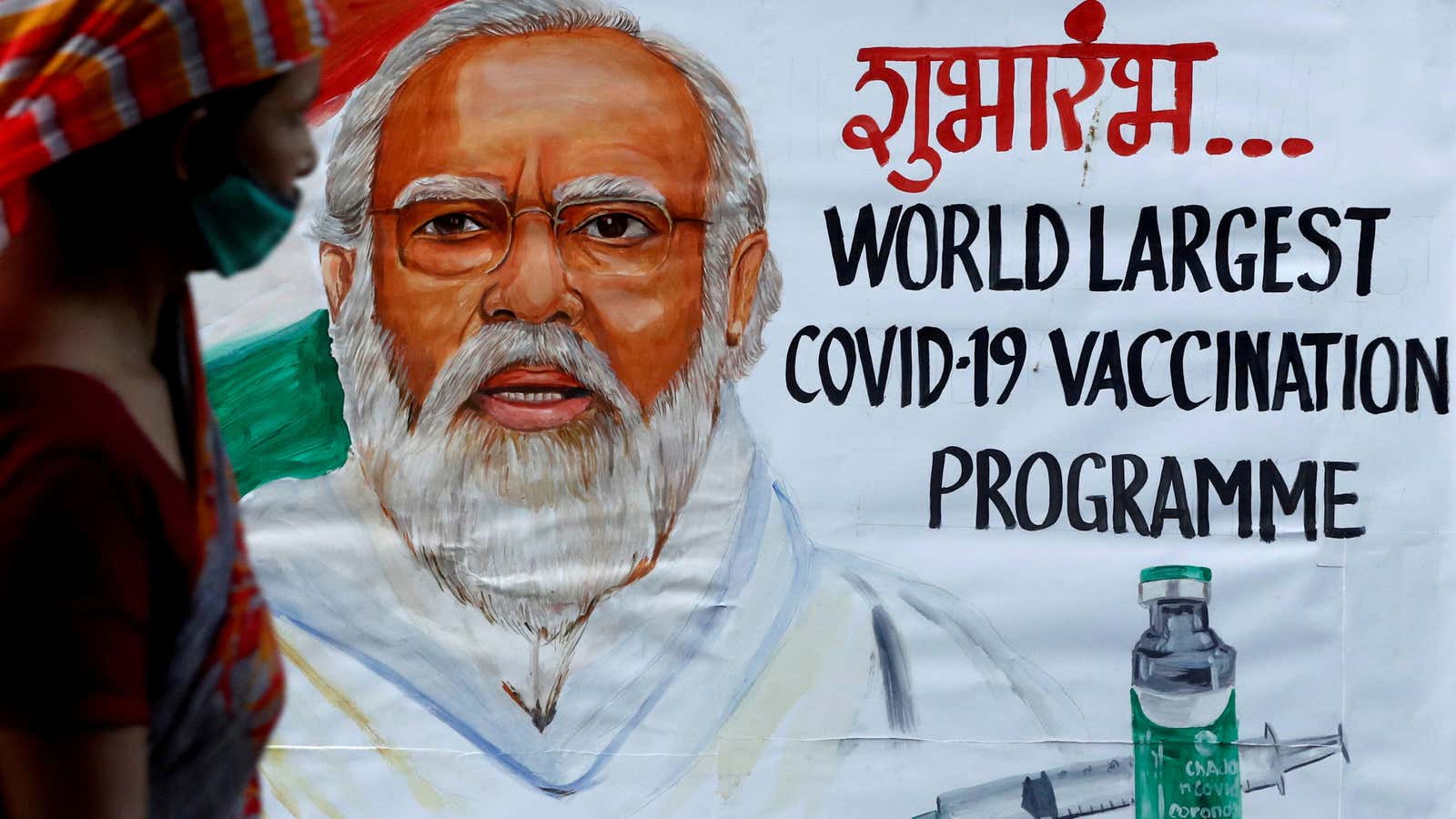The Narendra Modi government seems unsure of how many Covid-19 vaccines are being produced in the country.
In a single day in parliament, the government had three estimates for domestic vaccine production. On July 20, the health ministry first stated that Bharat Biotech, the company that makes Covaxin, is producing 10 million doses a month, and will be increased to 100 million in the coming months.
In the very next question about the current production capacity of vaccines manufactured in India, the ministry of health said: “The current average monthly capacity of production of Covishield by M/s Serum Institute of India (SII) is 11 crore [110 million] doses and of Covaxin by M/s Bharat Biotech International Limited is 2.5 crore [25 million] doses.”
In a third question, the health ministry said the SII was producing an estimated 130 million doses a month, and Bharat Biotech about 17.5 million doses a month.
Before these estimates in parliament, the Indian government had told the supreme court in May that Bharat Biotech was producing 10 million doses of Covaxin a month.
These data come at a time when a difference of a few million doses per month can make all the difference to India’s vaccination targets.
India’s vaccine targets and mismatch with production
Since January, the Modi government has announced several vaccination targets. In its latest affidavit to the supreme court (pdf) on June 26, the government said it would administer a cumulative 516 million doses till the end of July. Till today (July 23), it has administered a little over 418 million doses.
To meet this gap of 100 million doses in the next eight days, the government would need to give out 12.5 million doses every day without a break. That is going to be nearly impossible, given that even on a particularly fruitful day, India has administered roughly 5 million doses.
Yesterday (July 22), it administered 5.4 million doses, and on July 21, a little under 2.4 million, according to the government’s Cowin vaccine dashboard.
“The fact is that the supply of vaccines remains considerably lower than the demand for vaccines,” R Ramakumar, professor at the Tata Institute of Social Sciences in Mumbai, wrote in The Indian Express newspaper. “Firstly, India’s vaccine production capacity is not rising as is regularly claimed by the government of India. Secondly, the government’s projections for vaccine availability are consistently inflated and unrealistic,” he added.
The delay in vaccine supplies is partly responsible for this mismatch.
Delay in Covaxin supplies
Not only is there a mismatch in what Bharat Biotech estimates as its projected production capacity and the government’s data, but the company has also missed its deadline to supply vaccines in the country.
Covaxin, which Bharat Biotech’s co-developed with the government’s Indian Council for Medical Research, was to supply 20 million doses under an order placed in March. According to the government’s affidavit in the supreme court on June 26, the company was still to supply 1.8 million doses. If the company’s production capacity was indeed 10 million a month, this should not have been a huge target to achieve.
Added to this, the government placed an order for an additional 50 million doses for its homegrown vaccine on May 5, and Bharat Biotech was expected to deliver these in the months between May and July. Till June 26, Covaxin supplies were yet to begin.
The government has further ordered 190 million doses of the coronavirus vaccine on June 4 to be supplied between August and December.
Including an order of 270 million vaccines that the government hopes to place in the near future, Bharat Biotech is estimated to supply a total of 400 million doses between August and December. For this to happen, its capacity will need to increase to about 100 million doses a month—significantly higher than either of the 10-, 17.5- or 25 million doses the government currently estimates.
